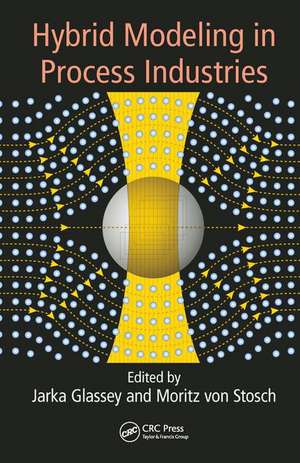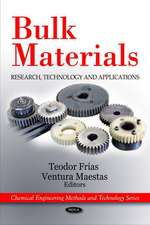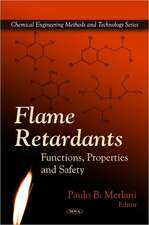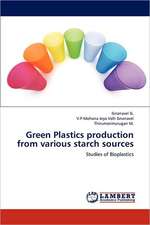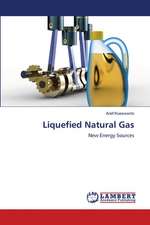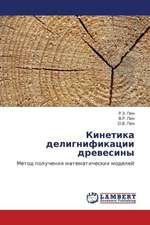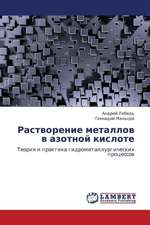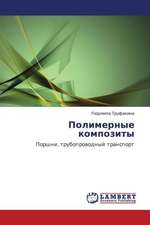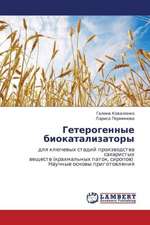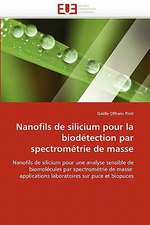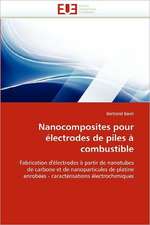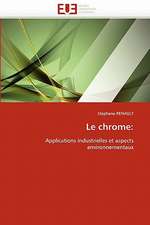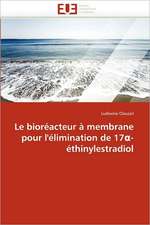Hybrid Modeling in Process Industries
Editat de Jarka Glassey, Moritz von Stoschen Limba Engleză Hardback – 14 feb 2018
It reviews hybrid modeling approach applicability in wide range of process industries, recommends how to increase hybrid model performance and throw Insights into cost efficient practices in modeling techniques
Discusses advance process operation maximizing the benefits of available process knowledge and Includes real-life and practical case studies
| Toate formatele și edițiile | Preț | Express |
|---|---|---|
| Paperback (1) | 437.13 lei 6-8 săpt. | |
| CRC Press – 30 iun 2020 | 437.13 lei 6-8 săpt. | |
| Hardback (1) | 1272.54 lei 6-8 săpt. | |
| CRC Press – 14 feb 2018 | 1272.54 lei 6-8 săpt. |
Preț: 1272.54 lei
Preț vechi: 1551.88 lei
-18% Nou
Puncte Express: 1909
Preț estimativ în valută:
243.51€ • 260.39$ • 203.03£
243.51€ • 260.39$ • 203.03£
Carte tipărită la comandă
Livrare economică 17 aprilie-01 mai
Preluare comenzi: 021 569.72.76
Specificații
ISBN-13: 9781498740869
ISBN-10: 1498740863
Pagini: 232
Ilustrații: 95 Illustrations, black and white
Dimensiuni: 156 x 234 x 20 mm
Greutate: 0.45 kg
Ediția:1
Editura: CRC Press
Colecția CRC Press
ISBN-10: 1498740863
Pagini: 232
Ilustrații: 95 Illustrations, black and white
Dimensiuni: 156 x 234 x 20 mm
Greutate: 0.45 kg
Ediția:1
Editura: CRC Press
Colecția CRC Press
Public țintă
Professional Practice & DevelopmentCuprins
1. Benefits and challenges of hybrid modelling in the process industries: An introduction. 2. Hybrid Model Structures for Knowledge Integration. 3. Hybrid models and Experimental Design. 4. Hybrid model identification and discrimination with practical examples from the chemical industry. 5. Hybrid modeling of biochemical processes. 6. Hybrid modelling of petrochemical processes. 7. Implementation of hybrid neural models to predict the behaviour of food transformation and food waste valorisation processes. 8. Hybrid modelling of pharmaceutical processes and PAT.
Notă biografică
Dr. Jarka Glassey currently works as a Professor of Chemical engineering education in the School of Engineering, Newcastle University, United Kingdom. She gained her academic qualifications in chemical engineering at the STU Bratislava, Slovakia, and PhD in biochemical process modeling at Newcastle University, United Kingdom. She is a Chartered Engineer, Fellow of the Institution of Chemical Engineers (IChemE), Rugby, UK, and currently serves on the IChemE Council. She is the Executive Vice President of the European Society of Biochemical Engineering Sciences (ESBES), and she is also the vice chair (immediate past chair) of the Modelling, Monitoring, Measurement & Control (M3C) Section of ESBES. Her research interests are particularly in the areas of bioprocess modeling, monitoring, whole process development, and optimization. She has published extensively in this area and over the years collaborated with a wide range of industrial partners in real-life bioprocess development and modeling applications. Currently she is coordinating a large European academic and industrial consortium carrying out research and training early career researchers in the use of the QbD, PAT and hybrid modeling approaches within biopharma industry in order to speed up the process development and reduce the lead times from discovery to full scale manufacture.
Dr. Moritz von Stosch joined the Technical Research and Development Department of GSK Vaccines in the beginning of 2017. Until then, he had worked as a Lecturer in Chemical Engineering at the School of Chemical Engineering and Advanced Materials, Newcastle University, Newcastle upon Tyne, UK, and he also was the team leader of HybPAT, a spin-off initiative with the aim of providing hybrid modeling solutions for an efficient implementation of PAT. In 2011 he earned his PhD at the Faculty of Engineering of the University of Porto, Porto, Portugal. He was awarded his diploma in engineering from the RWTH-Aachen University in Germany. Moritz von Stosch is a leading expert on hybrid modeling methods and their application to bioprocess problems. He is, for example, the author of more than ten publications on hybrid modeling and coauthor of several others. In the past years, he co-organized an expert meeting on "Hybrid Modeling for QbD and PAT in Biopharma," which was integrated into the ESBES M3C panel series, and he also co-organized all three bi-annually hold hybrid modeling summer schools. In addition, he gave a number of invited talks on "Hybrid modeling for QbD and PAT" across Europe and the United States.
Dr. Moritz von Stosch joined the Technical Research and Development Department of GSK Vaccines in the beginning of 2017. Until then, he had worked as a Lecturer in Chemical Engineering at the School of Chemical Engineering and Advanced Materials, Newcastle University, Newcastle upon Tyne, UK, and he also was the team leader of HybPAT, a spin-off initiative with the aim of providing hybrid modeling solutions for an efficient implementation of PAT. In 2011 he earned his PhD at the Faculty of Engineering of the University of Porto, Porto, Portugal. He was awarded his diploma in engineering from the RWTH-Aachen University in Germany. Moritz von Stosch is a leading expert on hybrid modeling methods and their application to bioprocess problems. He is, for example, the author of more than ten publications on hybrid modeling and coauthor of several others. In the past years, he co-organized an expert meeting on "Hybrid Modeling for QbD and PAT in Biopharma," which was integrated into the ESBES M3C panel series, and he also co-organized all three bi-annually hold hybrid modeling summer schools. In addition, he gave a number of invited talks on "Hybrid modeling for QbD and PAT" across Europe and the United States.
Descriere
The book is based on contributions of leading experts in the field and it covers both hybrid modeling fundamentals and their applications. The application part covers the utilization of hybrid modeling for typical process operation and design applications in industries such as chemical, petrochemical, biochemical, food and pharmaceutical process engineering.
.
.
